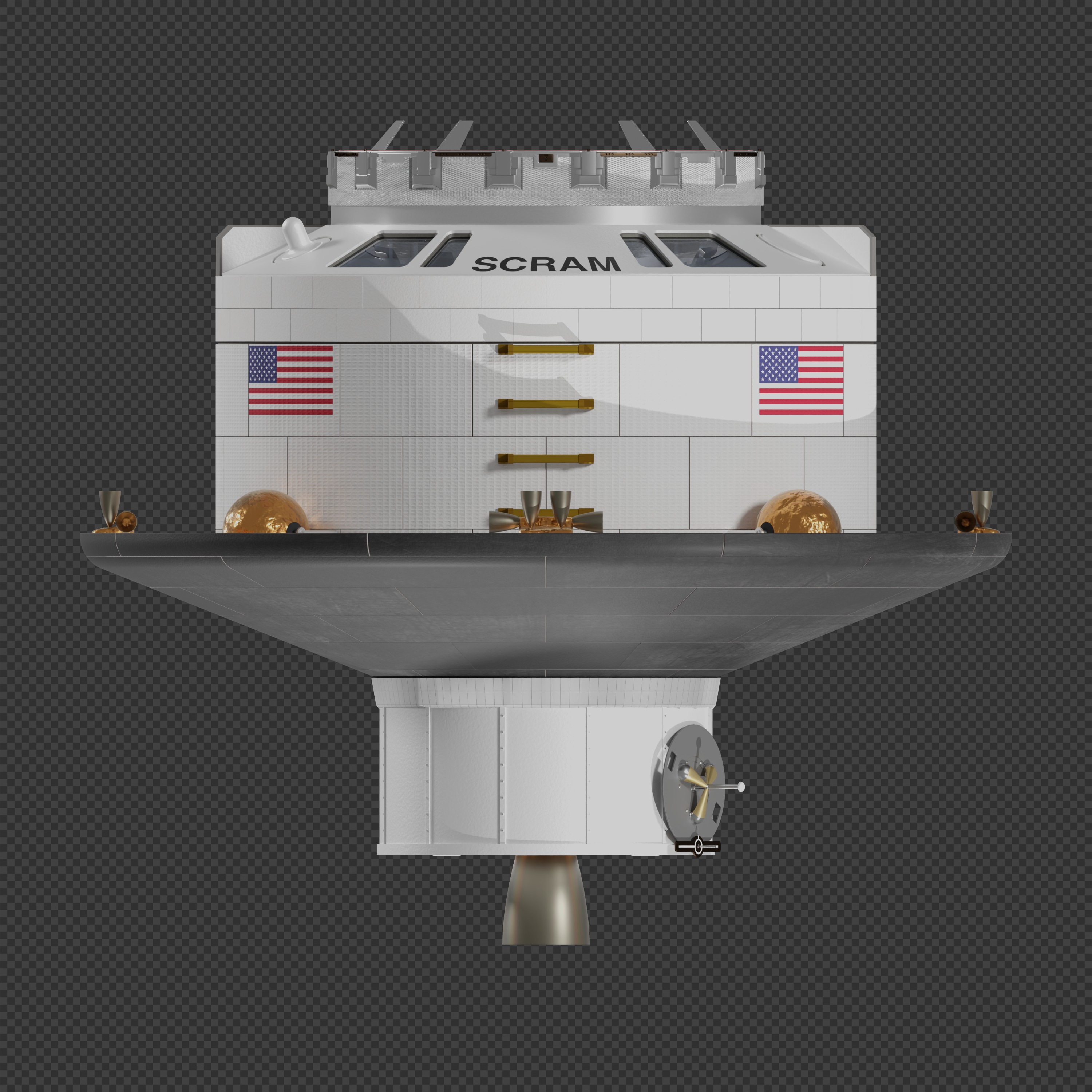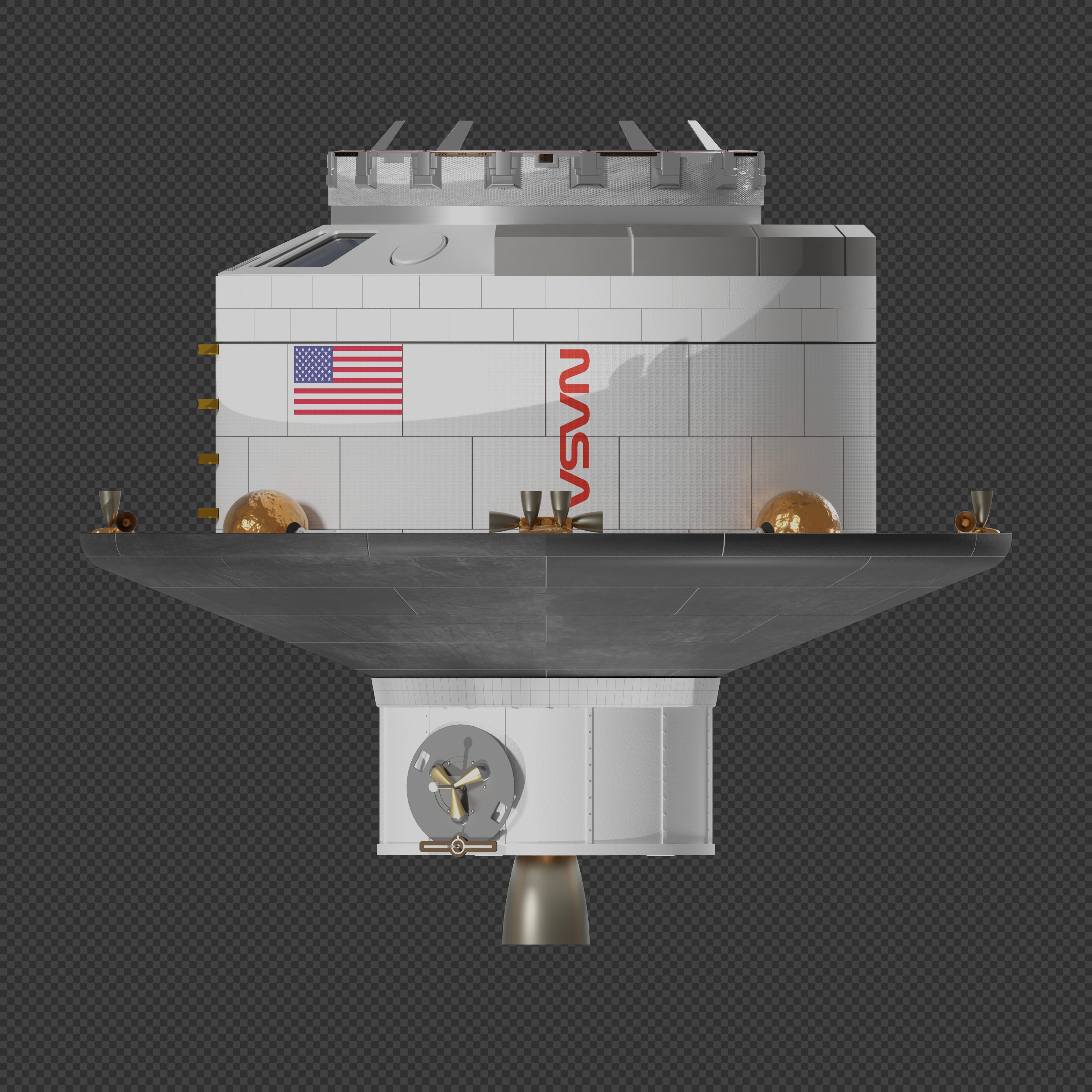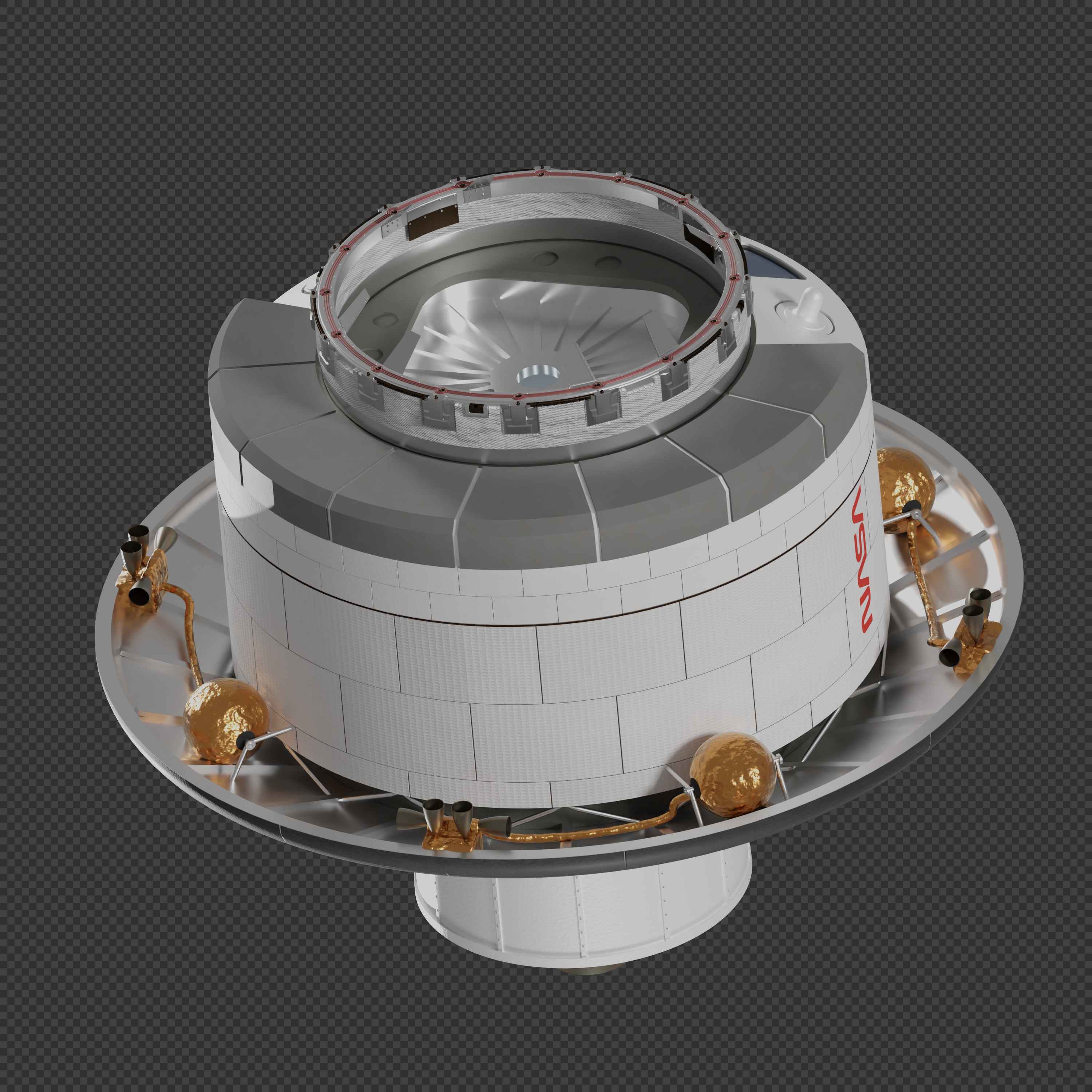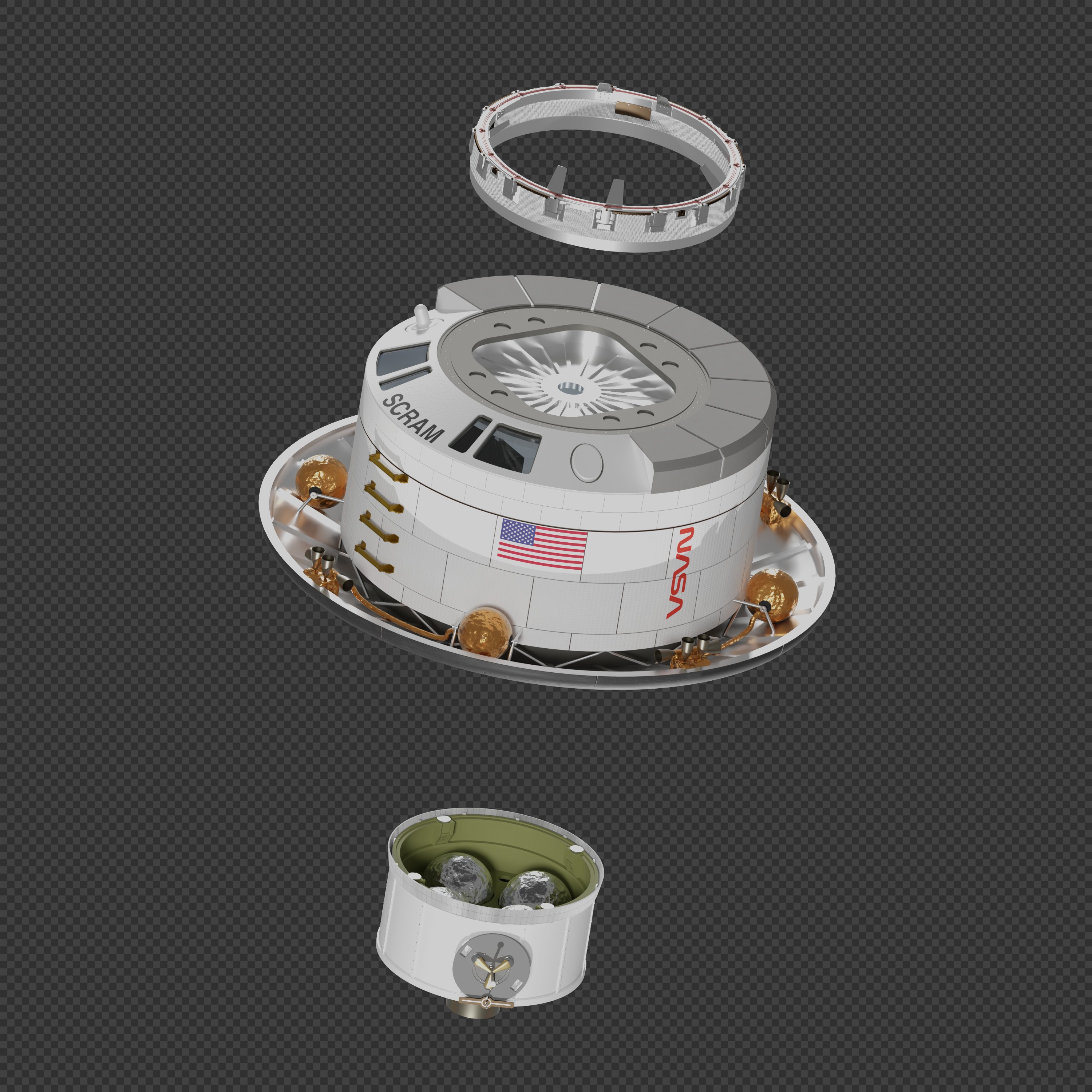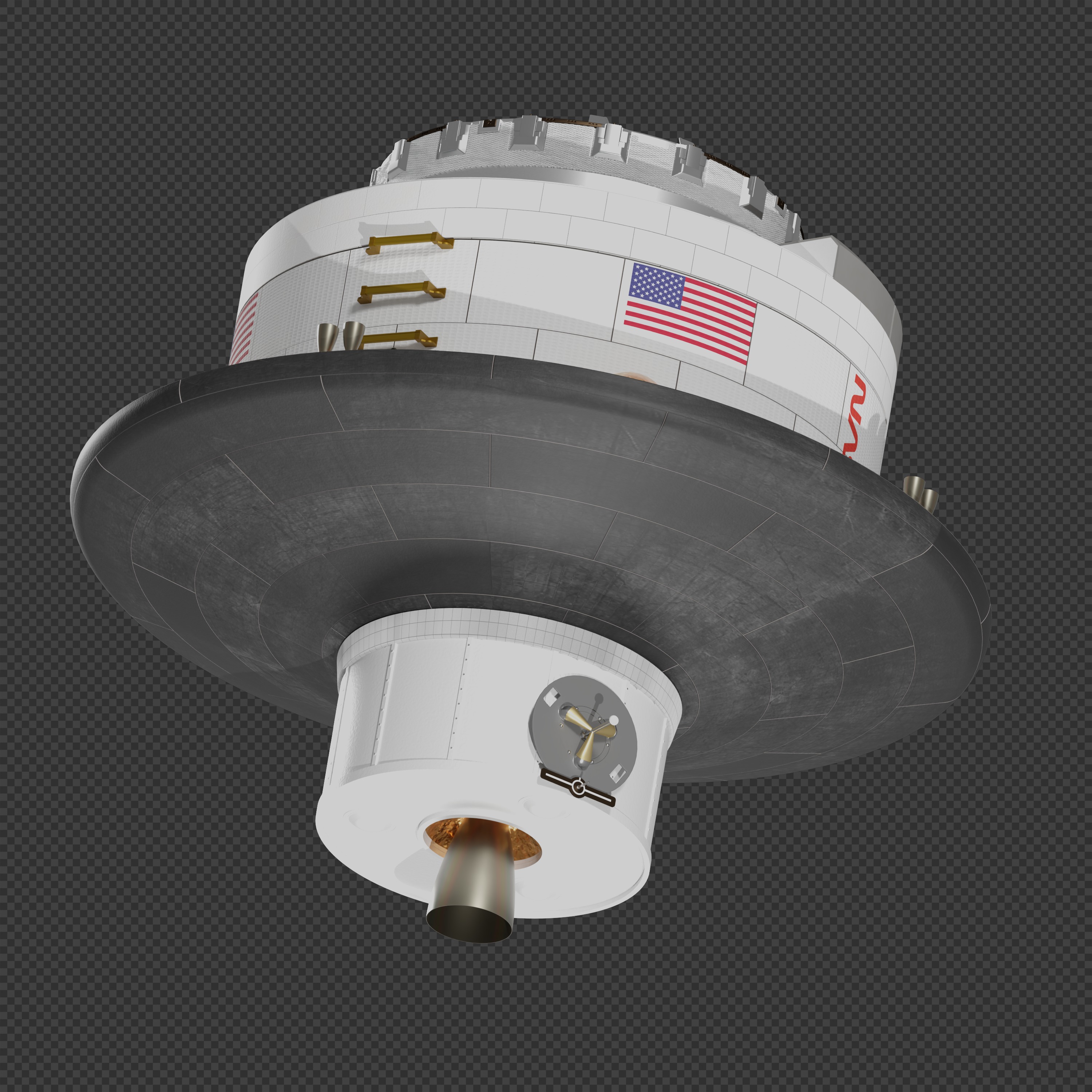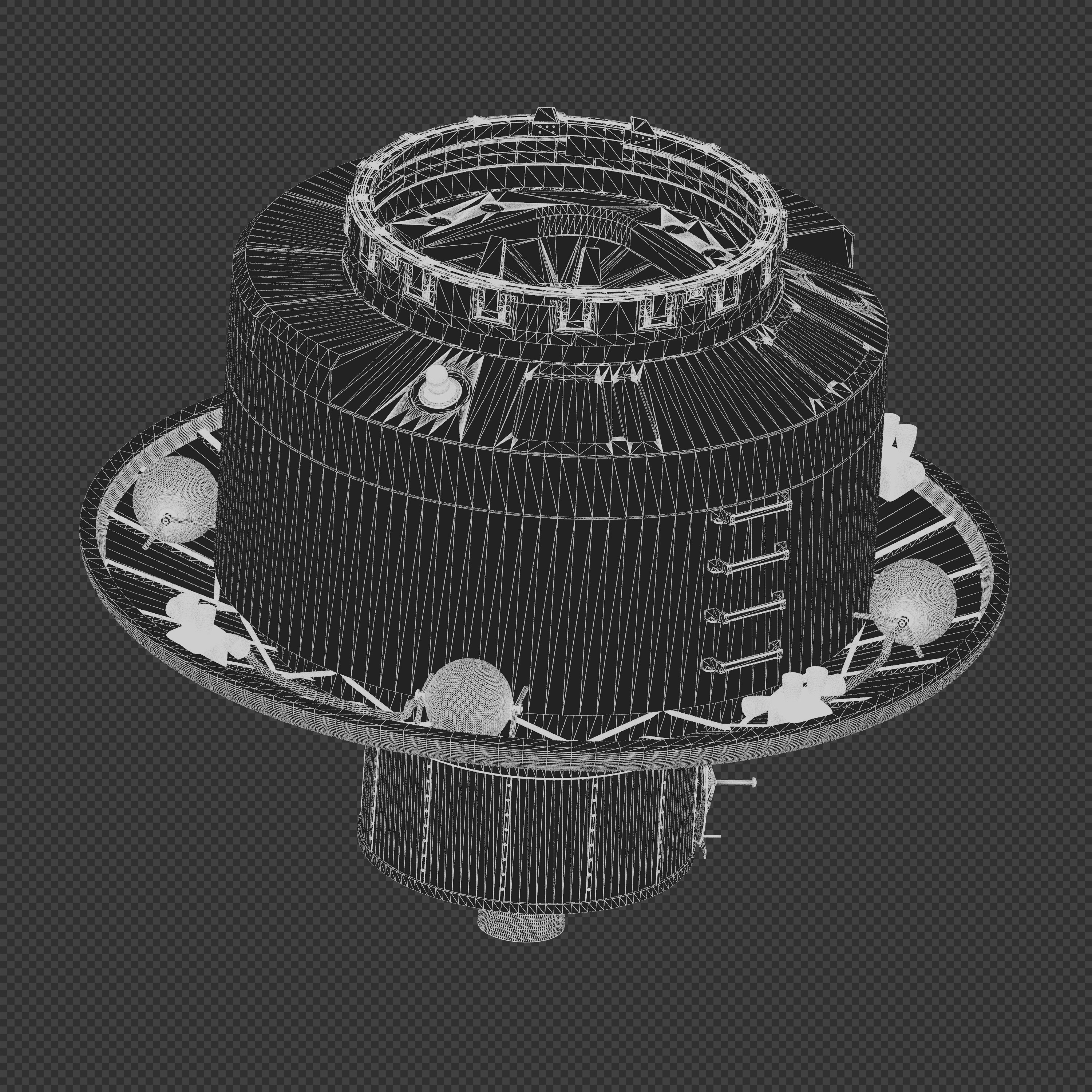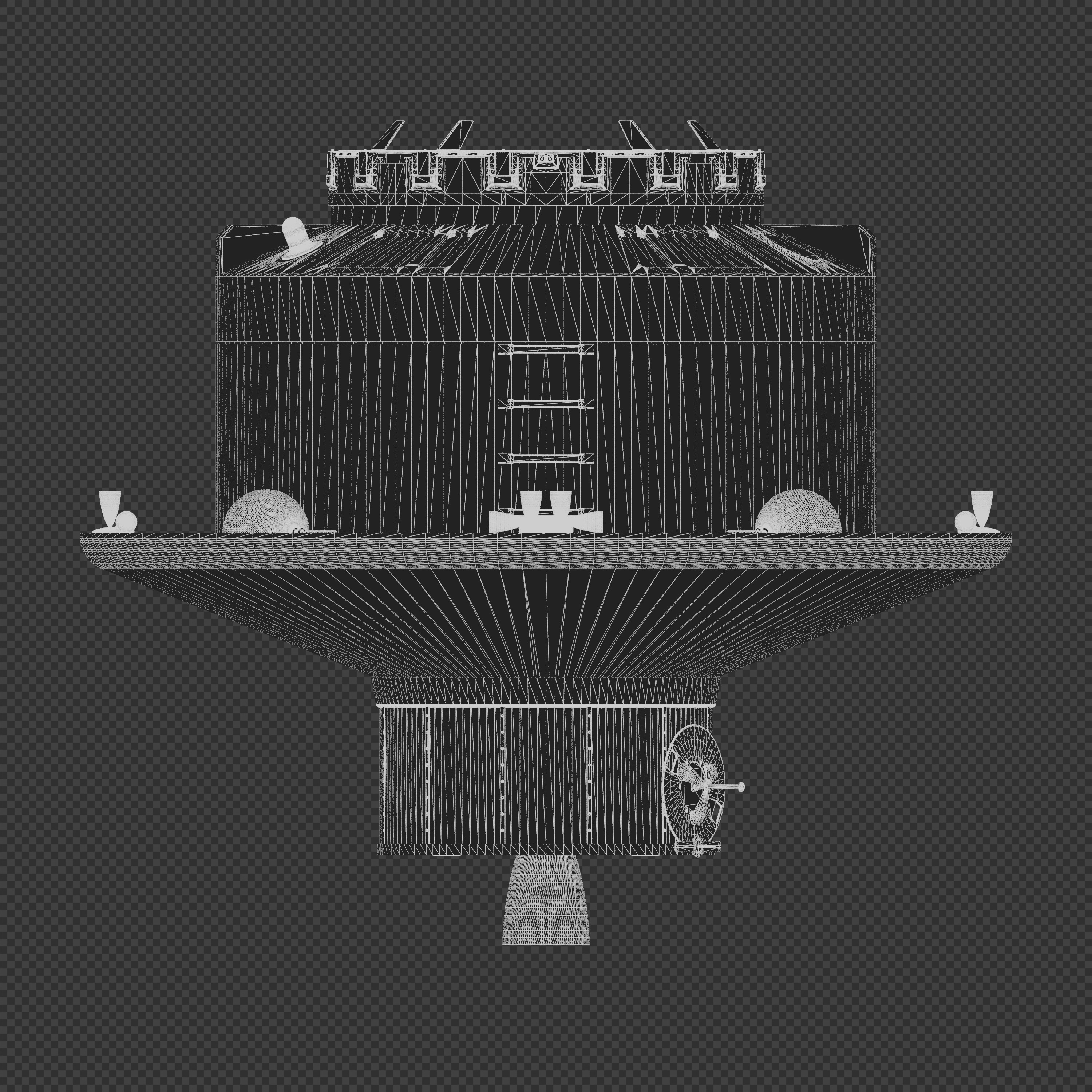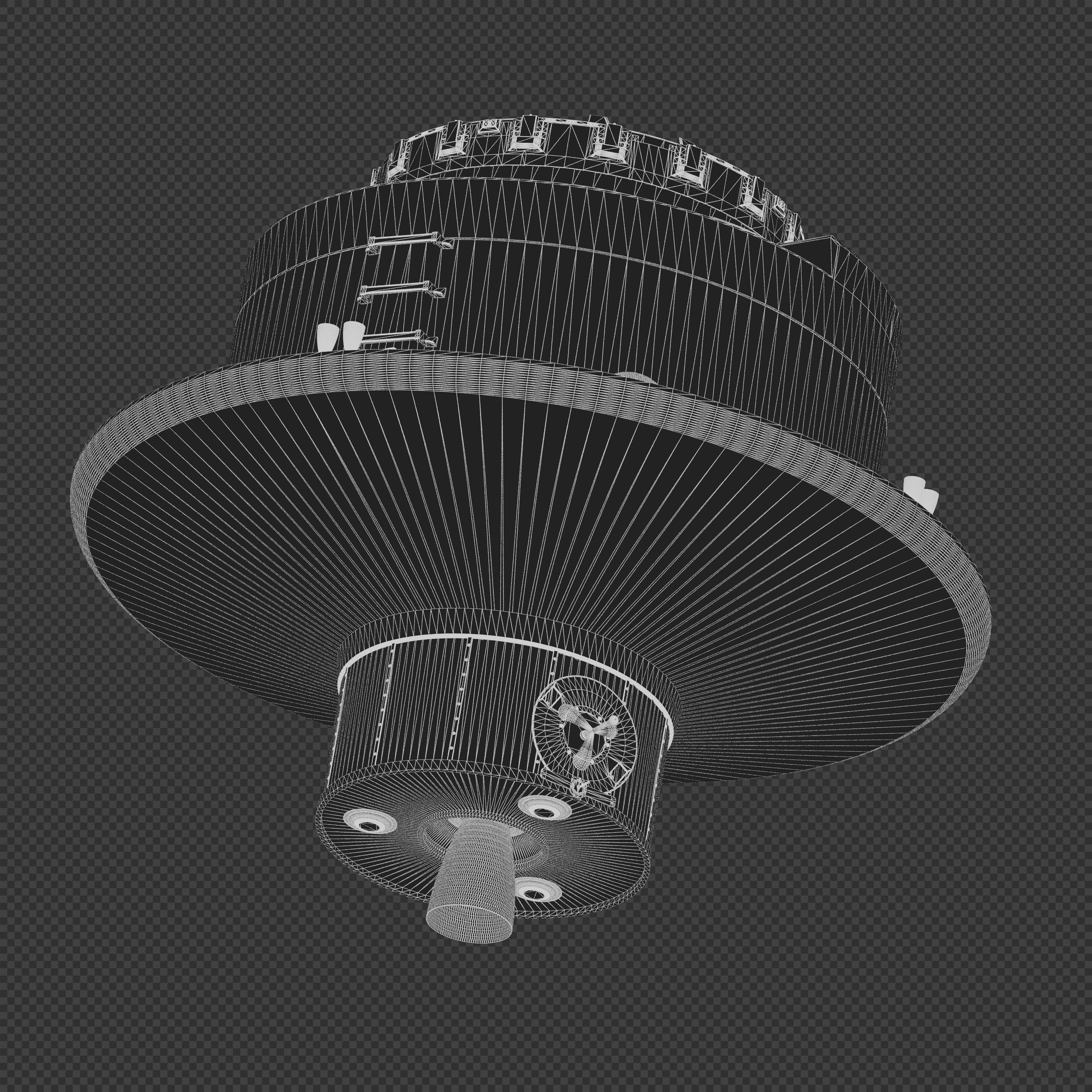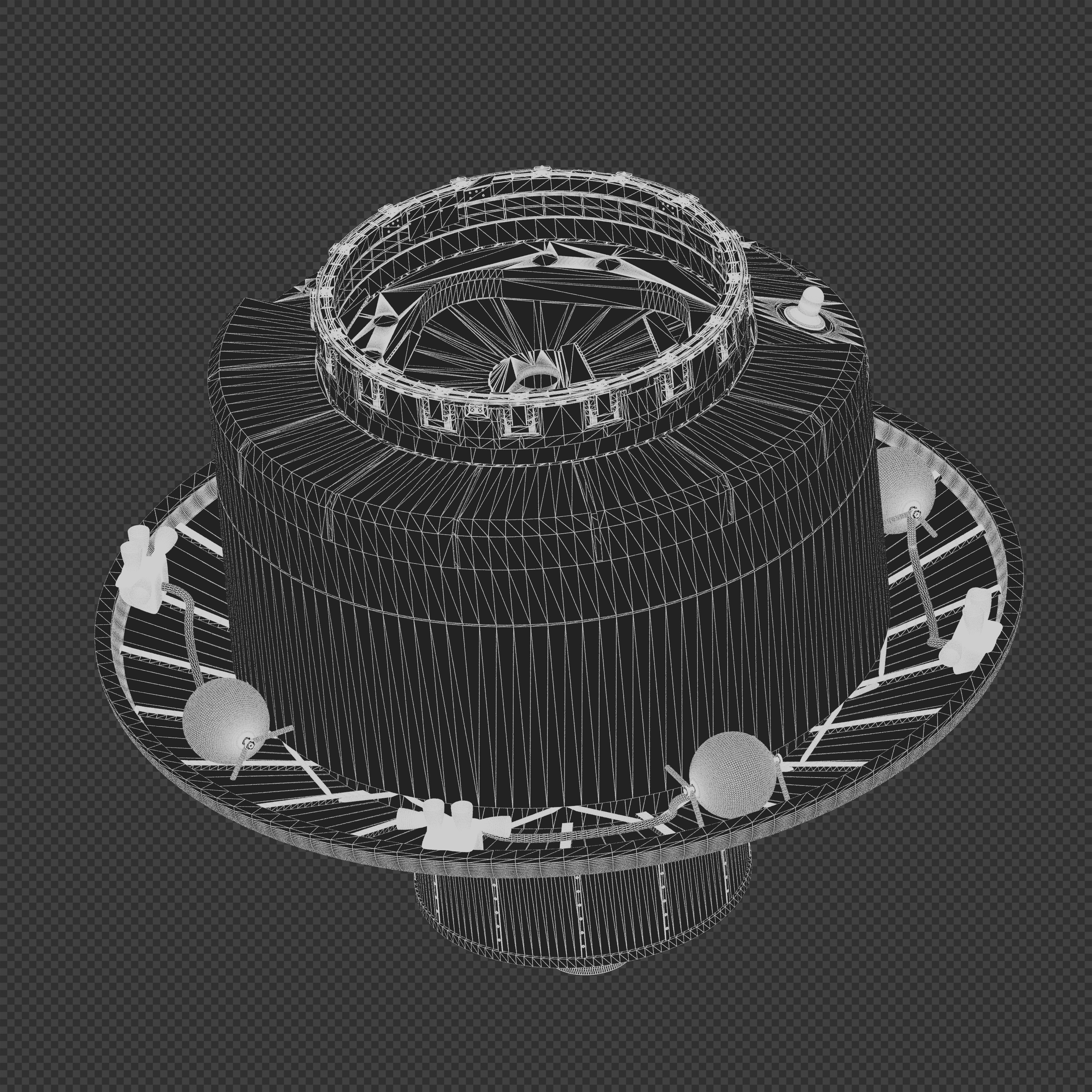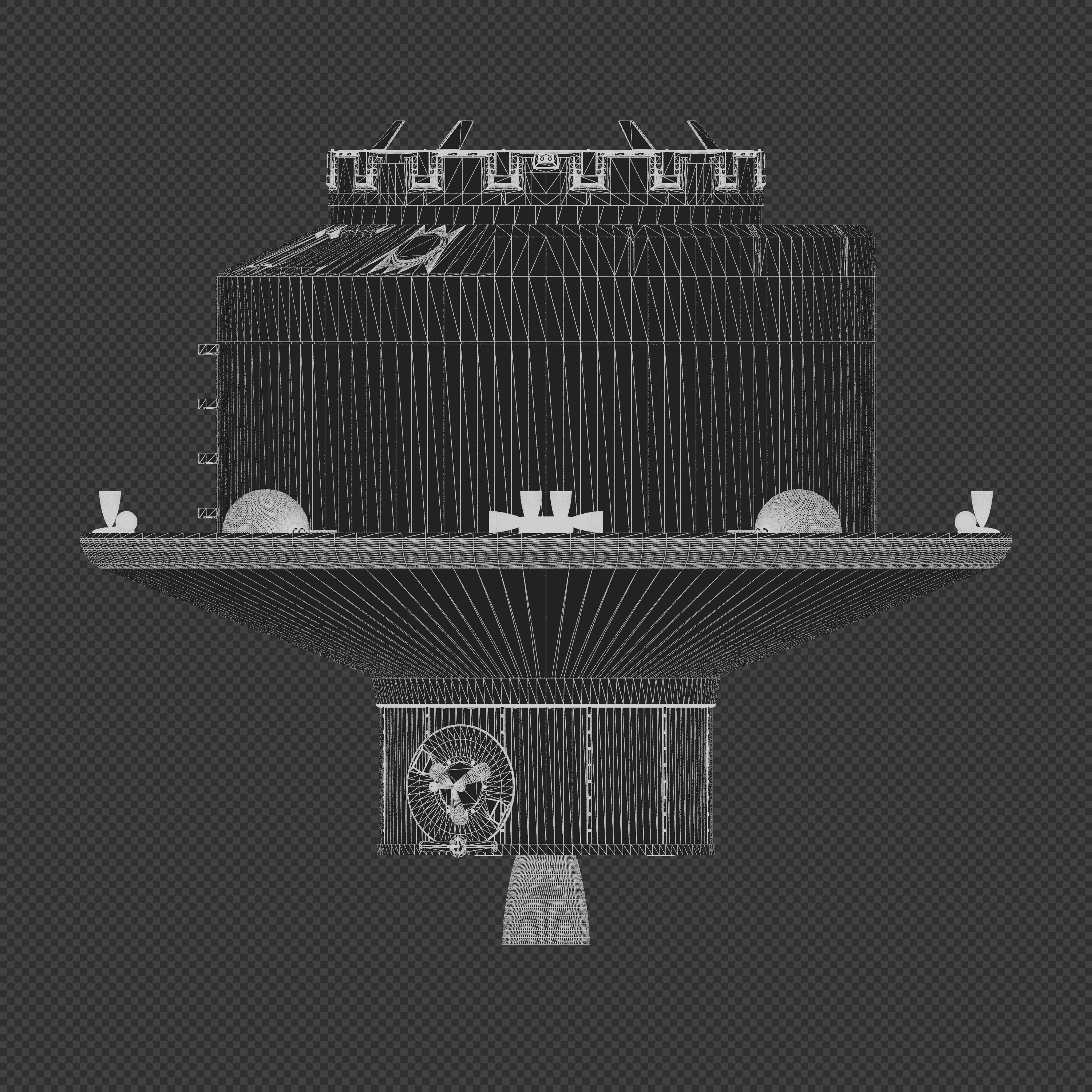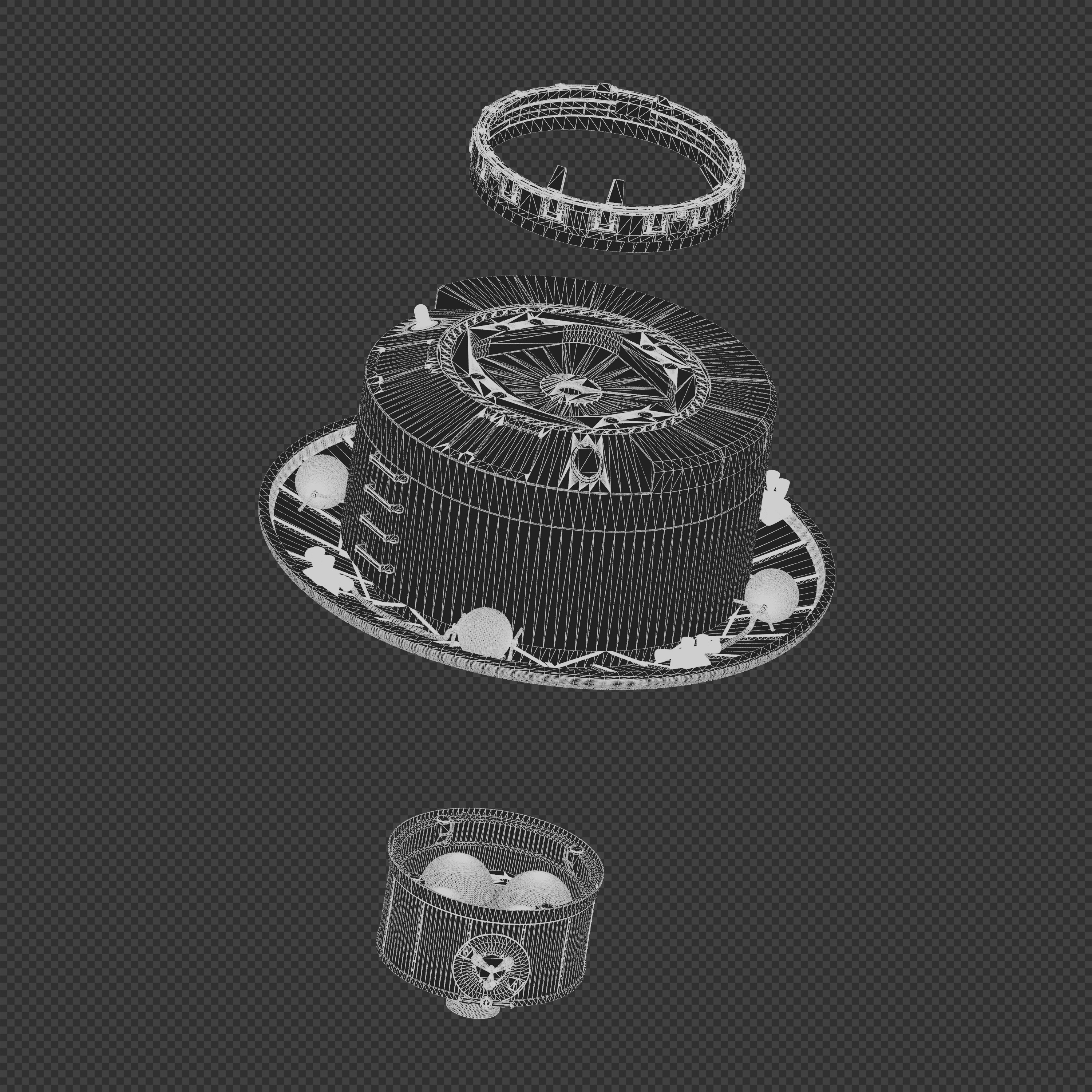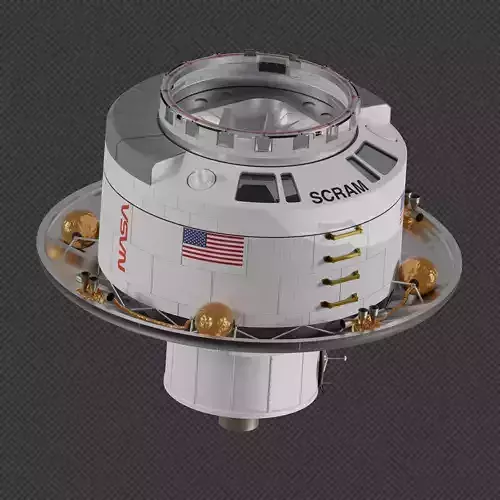
NASA SCRAM Crew Return Vehicle 3D model
The Station Crew Return Alternative Module (SCRAM) was a 1990s NASA concept for an emergency crew return spacecraft, intended as a lifeboat for the Space Station Freedom program (which became the International Space Station). Because the Space Shuttle orbiter was limited to missions of only about 3 weeks, it would not have been practical to maintain a permanent human presence in orbit with only that vehicle. A dedicated lifeboat was seen as necessary, in case the station was damaged or a crewmember experienced a medical emergency, so astronauts could return to Earth at any time during their 6-month stay in space. SCRAM was one proposal to meet this need, favoring an extremely simple design. The reentry vehicle consisted of a cylindrical pressure vessel with seating for six crewmembers, protected behind a conical heat shield derived from the Viking Mars probe. There was no backshell heatshield, the main shield was large enough for the cabin to be almost fully enclosed in its wake, requiring only minor shielding near the top. A small propulsion module would provide the deorbit burn and then be discarded, and the Common Berthing Mechanism on top of the capsule would be released to expose the parachute bay.
SCRAM was expected to be a low-cost program by crew vehicle standards. As a pure rescue vehicle, it did not need to support crewed launch, independent rendezvous and docking (it would be carried up as a payload in a Shuttle orbiter, like other modules of the space station), and only needed to support a few hours of flight after undocking
All materials and textures are packed in the .blend file. Unapplied modifiers and instancing have been used to reduce file size and enable easy editing.

